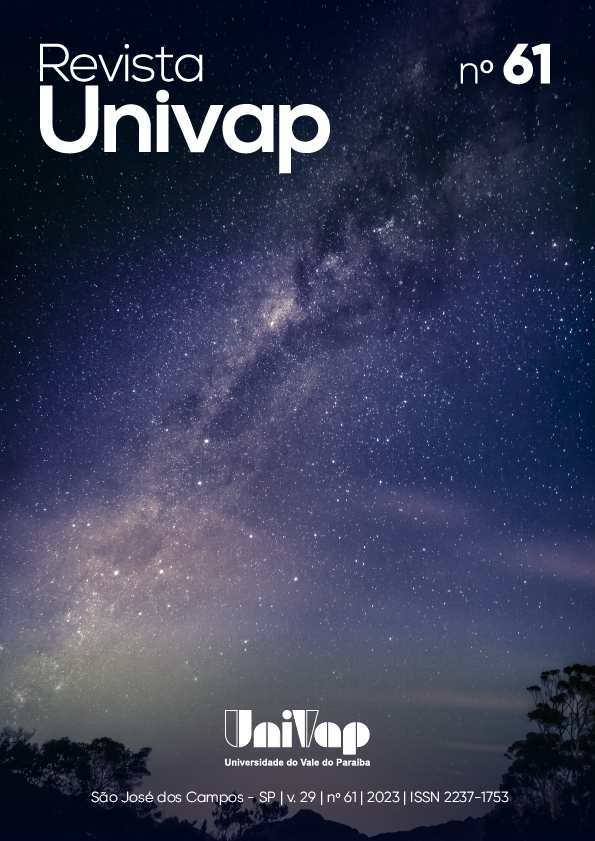IMPLEMENTATION OF THE TWO-DIMENSIONAL FOURIER TRANSFORM FOR ANALYSIS OF SPIRAL STRUCTURES IN GALAXIES
DOI:
https://doi.org/10.18066/revistaunivap.v29i61.4427Keywords:
Spiral structures, Galaxies, Two-dimensional Fourier TransformAbstract
Normal spiral galaxies have a nucleus, disk, bulge, halo, and spiral arms. These systems arouse a lot of curiosity, attraction, and scientific questions and, consequently, many studies and techniques are proposed for the analysis of such structures. In this work, we implement the two-dimensional Fourier Transform method to analyze the spiral structures of galaxies and for that, a Python program was developed. The algorithm was tested using three images: a two-armed logarithmic spiral, a three-armed logarithmic spiral, and an image of the galaxy NGC 4321. With this technique we were able to determine the dominant components in each of the spiral structures, being m=2, m=3 and e m=2, respectively.
Downloads
References
Boeshaar, G. O., & Hodge, P. W. (1977). H II Regions and the Spiral Structure of NGC 3631. The astrophysical journal, 213, 361-367.
Castiblanco Tolosa, L. J. (2014). Modelo semi-analítico de brazos espirales en galaxias de disco. [Trabalho de graduação, Universidade Pedagógica e Tecnológica da Colômbia].
Elmegreen, B. G., Elmegreen, D. M. & Seiden, P. (1989). Spiral arm amplitude variations and pattern speeds in the grand design galaxies M51, M81, and M100. The Astrophysical Journal, 343, 602-607.
Groot, H. (1925). Nebulæ, On the true shape of some spiral. Monthly Notices of the Royal Astronomical Society, 85, 535-541.
Groot, H. (1926). On the spiral form of some nebulae. Monthly Notices of the Royal Astronomical Society, 86, 146-148.
Picazzio, E. (2011). O céu que nos envolve: Introdução à Astronomia para educadores e iniciantes. Odysseus Editora.
Press, W. H., Teukolsky, Saul A., Vetterling, William T. & Flannery, Brian P. (1992). Numerical Recipes in C: The Art of Scientific Computing (2. ed.). Cambridge University Press.
Puerari, I. & Dottori, H. (1997). A morphological method to determine corotation radii in spiral galaxies. The Astrophysical Journal, 476(2), L73.
Sakhibov, F., Gusev, A. S. & Hemmerich, C. (2021). Azimuthal propagation of star formation in nearby spiral galaxies: NGC 628, NGC 3726, and NGC 6946. Monthly Notices of the Royal Astronomical Society, 508(1), 912-925.
Scarano Jr, S. (2008). Curvas de rotação e gradientes de metalicidade de galáxias espirais: o papel da corrotação e novas observações. [Tese de Dourado em Astronomia. Universidade de São Paulo].
Reynolds, J. H. (1925). The forms and development of the spiral and allied nebulae. Monthly Notices of the Royal Astronomical Society, 85, 1014-1020.
Rots, A. H. (1975). Distribution and kinematics of neutral hydrogen in the spiral galaxy M 81. II-Analysis. Astronomy and Astrophysics, 45, 43-55.
Villamizar, N. V. (2001). Análise de ressonâncias em galáxias espirais. [Tese de Doutorado em Física, Universidade Federal do Rio Grande do Sul, Instituto de Física].
Yu, S. Y., & Ho, L. C. (2020). The Statistical Properties of Spiral Arms in Nearby Disk Galaxies. The Astrophysical Journal, 900(2), 150.
Downloads
Published
How to Cite
Issue
Section
License
Copyright (c) 2023 Revista Univap

This work is licensed under a Creative Commons Attribution 4.0 International License.

This work is licensed under a Creative Commons Attribution 4.0 International.
This license allows others to distribute, remix, tweak, and build upon your work, even commercially, as long as they credit you for the original creation.
http://creativecommons.org/licenses/by/4.0/legalcode


